Nearly 1,300 guerrillas are hiding in the country
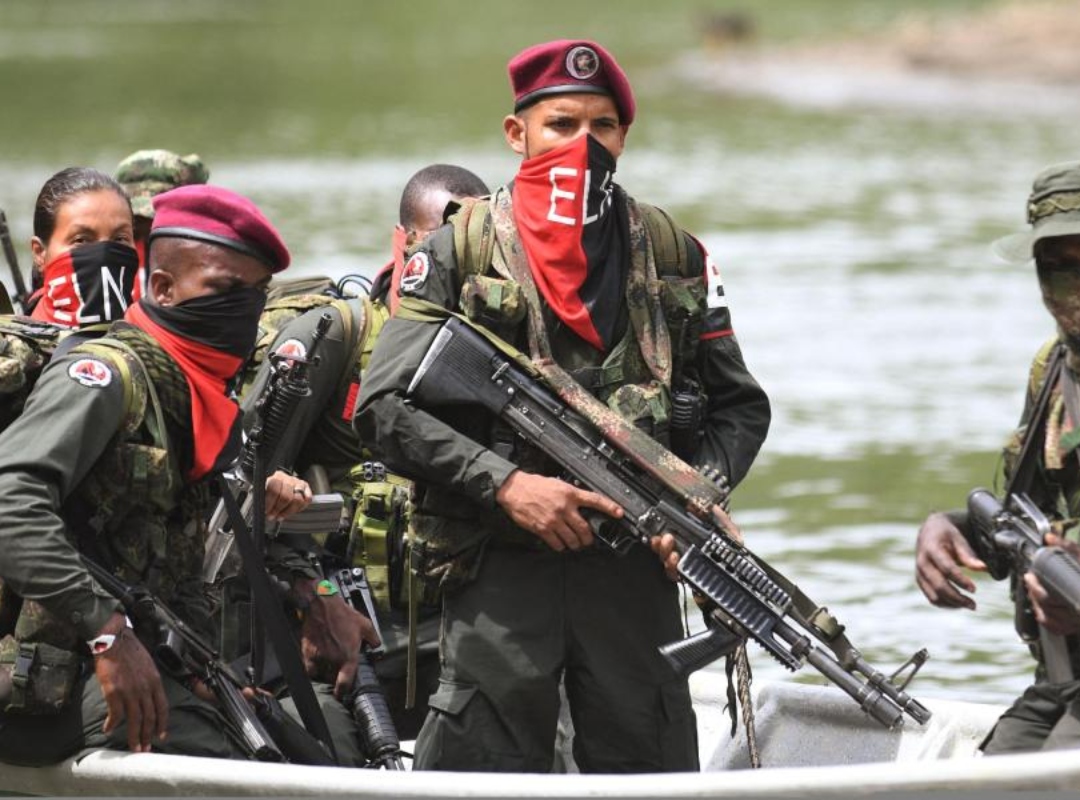
Guerrilla in Colombia and paramilitary group in Venezuela. This paradoxical definition applies, according to experts, to the ELN, the group of alias Antonio García that this week shook the strategy of ‘total peace’ with the terrorist attack that killed three soldiers and left 25 wounded in Arauca.
In Colombia, the authorities include it in the category of the so-called ‘GAO’: large illegal armed organizations whose capacity to harm and affect the population is susceptible to being responded to even with the greatest weapon in the hands of the State: bombings, the same ones that changed the course of the conflict with the FARC a decade and a half ago.
It is a criminal ‘club’ that the ELN leaders do not like – it also includes the FARC dissidents and the ‘Gulf Clan’– and that is why one of their demands at the peace table, which they were also on the verge of achieving, was that the government remove them from that categorization, with all the political and military implications that this could entail.
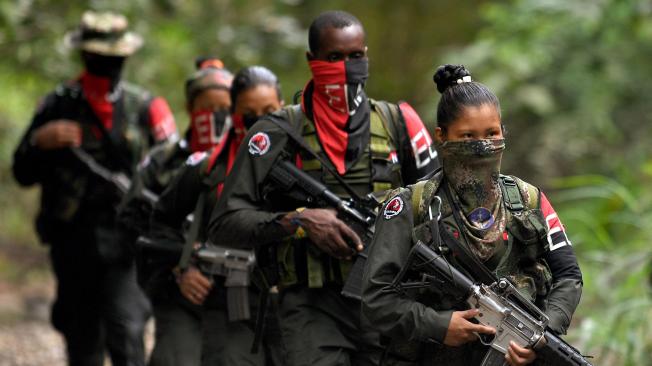
According to intelligence information, the ELN has more than 6,000 members, of which 4,882 are in Colombia and 1,276 in Venezuela. Photo: Daniel Munoz / AFP
In Venezuela, according to the Nicolás Maduro regime, there is no ELN. But what everyone knows is that Its main bosses, starting with ‘Garcia’, enter and leave Caracas. And that, especially towards the border area, there are ‘Eleno’ camps from which groups move that attack the population and the Public Force in Colombian departments such as Norte de Santander and Arauca. These are the same armed actors that the regime uses on the other side of the border to intimidate and keep under control potential threats to the power of the dictatorship.
The ELN presence that Miraflores denies now and before appears documented in intelligence documents from the government of President Gustavo Petro. In fact, in the document Assessment of Critical Threat Capabilities, carried out by intelligence agencies, to which Miraflores had access The Weatherit is noted that, as of last January, the ELN was present “in 19 departments and in Venezuelan territory.”
The document, labeled “secret” and of national security, makes what is called an “enemy count.” And reveals that of the 6,158 members of that guerrilla group, 4,882 are in national territory and 1,276 in Venezuela. ‘Iván Márquez’, the leader of the dissidents of the so-called ‘Second Marquetalia’, has also been moving there for years. Hence, Maduro’s position in Venezuela is considered by many to be a key factor in the success or failure of ‘total peace’ in Colombia.
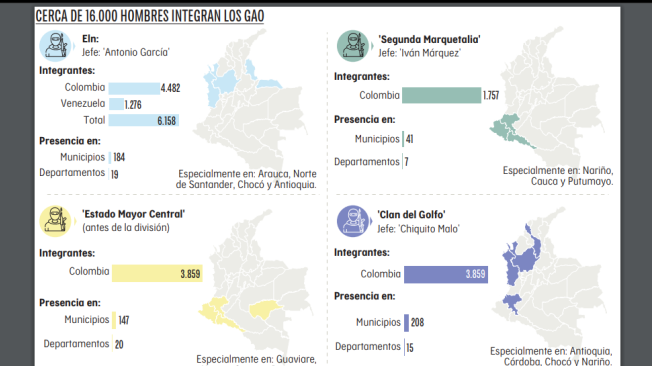
Around 16,000 people are members of the Organized Armed Groups. Photo: ACCAM 41
With the most warlike wing, that of ‘Antonio García’, ratified in command at its recent congress, the ELN has taken advantage of the ‘total peace’ to strengthen its threat in what it considers its ‘historical’ territories (Arauca, Norte de Santander) and to strengthen its militia work in the big cities. The attack against the Andino Shopping Center (2017), the attack against a station in Barranquilla (2018), the intelligence work for the attack against the Police School in Bogotá (2019) and the infiltration of the social protest in 2021 show the magnitude of this threat. Simultaneously, but with rather adverse results, it has begun to advance to dispute control in areas of the dissidents and the ‘Gulf clan’.
Extortion, kidnapping and drug trafficking – which they publicly deny – are the main sources of funding for the ‘Elenos’ in the country. In Venezuela, they are accused of to be at the forefront of gold and coltan exploitations in the Amazon regionwith the blessing of the Venezuelan authorities.
“The ELN has already entered the negotiations quite strongly, but the ceasefire has allowed it to control some territories, especially against other actors who wanted to be there. That is what ultimately results in a great blow to the communities that continue to ask for humanitarian relief and do not get it,” says Angelika Rettberg, an analyst on peace and conflict issues.
What’s happening in the regions?
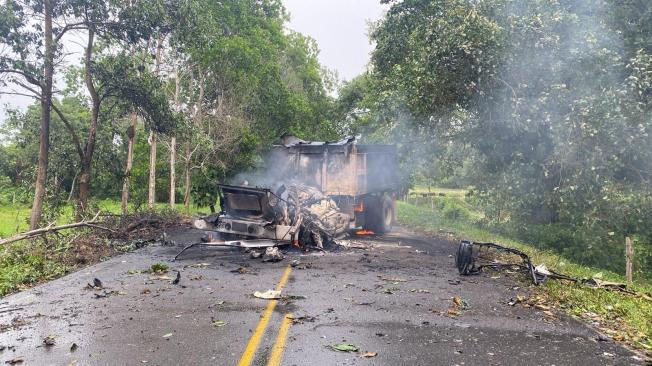
The military unit was attacked with cylinders thrown from a dump truck. Photo: Courtesy
Tatiana Prada, a researcher on Conflict and Security at the Ideas for Peace Foundation (FIP), believes that, in terms of military strength, the ELN is today very similar to the one that began this process two years ago, which could be “good news.” When speaking about the political character of the group, the researcher points out that the ELN retains “significant social bases” in its historical areas: Arauca, Catatumbo (Norte de Santander) and southern Cauca.
“It is an ELN that continues to have a very important and structural relationship with Venezuela, with the Venezuelan government in particular. And that maintains within its guidelines and strategic objectives the accompaniment and defense of that political project that exists in the neighboring country and that flag bearer Nicolas Maduro“Prada notes.
He adds that the ELN has not fared well in its search for new territorial spaces. “We continue to find ourselves with an ELN very similar or identical to that of 2022, strategically positioned on two axes: the east of the country and the Pacific platform, where it is weakened by the loss of the ‘Comuneros’ front in Nariño.”
Luis Fernando Trejos, an expert in conflicts, points out that the case of ‘Comuneros del Sur’ is evidence of the difficulties that the ELN Central Command is having, both in terms of force control and in the military. “The same thing is happening in southern Chocó, where has a war that it loses every day with the ‘Gulf Clan’which is advancing from the north. And there is a similar scenario in Bajo Cauca, areas of Antioquia and southern Bolívar,” he says.
‘Paramilitary force’
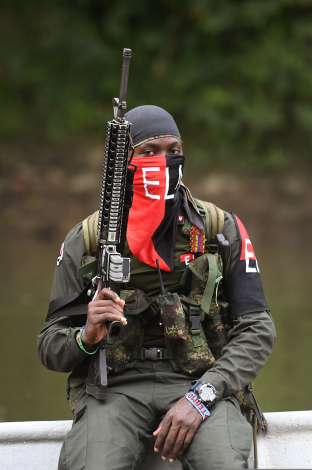
ELN guerrilla in Chocó, in 2023. Photo: Daniel Munoz / AFP
Hugo Acero, an expert in citizen security and conflict, recalls in any case that according to the Ombudsman’s Office, in 2022 the ELN had influence in 189 municipalities, but during 2023 its presence extended to 231 in 19 departments. “Today, almost all of their fronts are dedicated to criminal profits, such as drug trafficking, illegal mining and extortion. This makes it a group with the economic capacity to continue growing and to carry out its criminal activities with greater violence,” he says.
Acero points out that the ELN in Venezuela acts more like a paramilitary force in support of the government of Nicolás Maduro. In his opinion, this has a negative influence on the peace talks in Colombia. As long as it has the support of the dictatorship and the resources of criminal income, it is difficult for the guerrilla to seriously consider leaving illegality behind through a negotiation process.
In fact, the moment of anxiety that the regime faces after the result of the elections of July 28 and the strength of the sectors that protest against the alleged fraud against Edmundo Gonzalez This is a factor to consider, as Maduro would hardly be willing to weaken the unofficial armed scheme with which he maintains control in large areas and in which the ELN has been a key piece, both in the training of militias and in specific operations.
Grupo de Diarios América (GDA), to which El Nacional belongs, is a network of leading media outlets founded in 1991, which promotes democratic values, independent press and freedom of expression in Latin America through quality journalism for our audiences.
Independent journalism needs the support of its readers to continue and ensure that uncomfortable news that they don’t want you to read remains within your reach. Today, with your support, we will continue working hard for censorship-free journalism!
